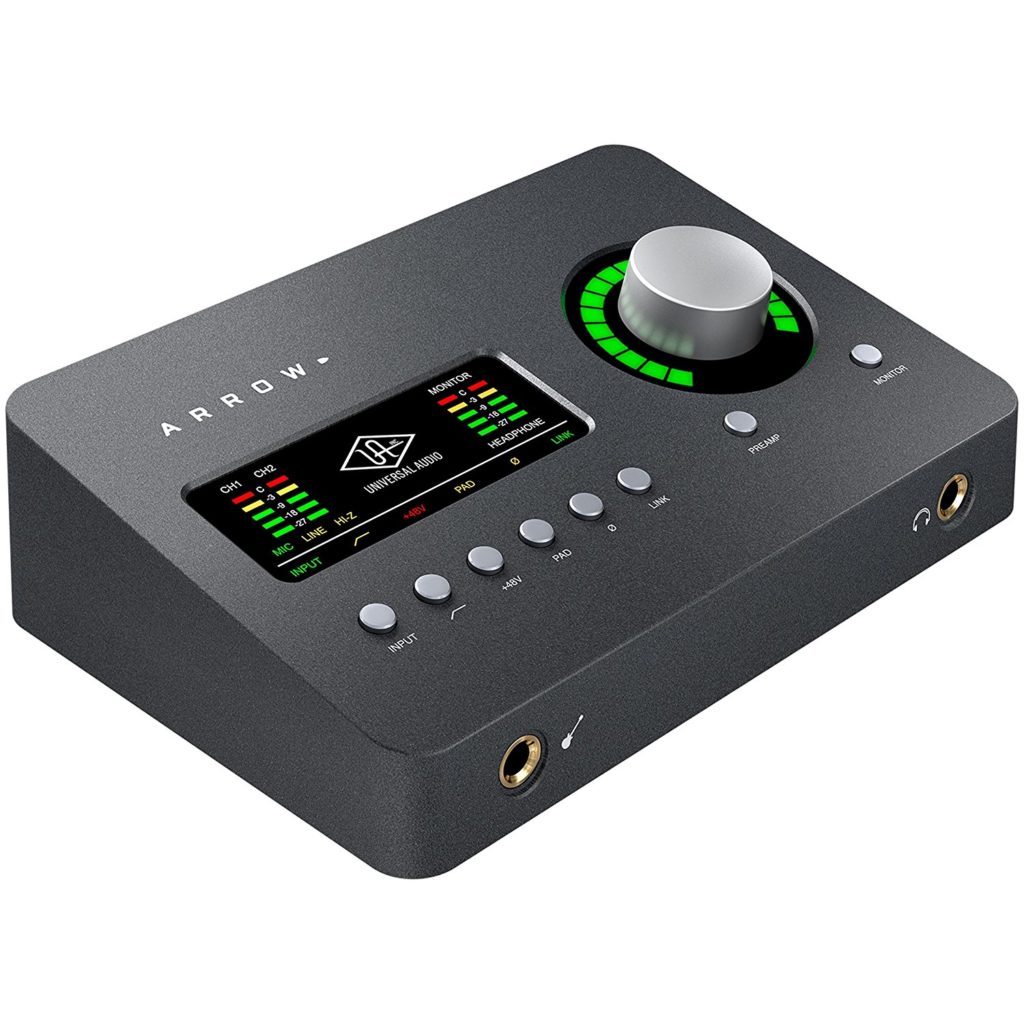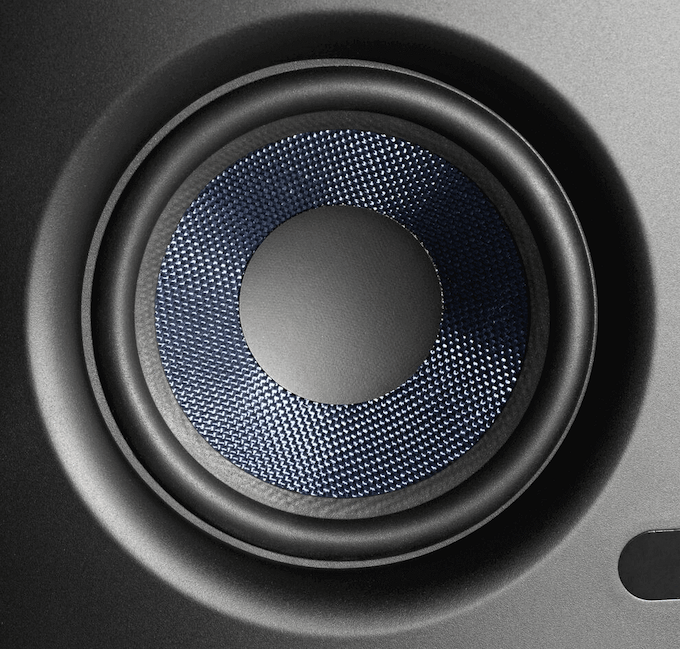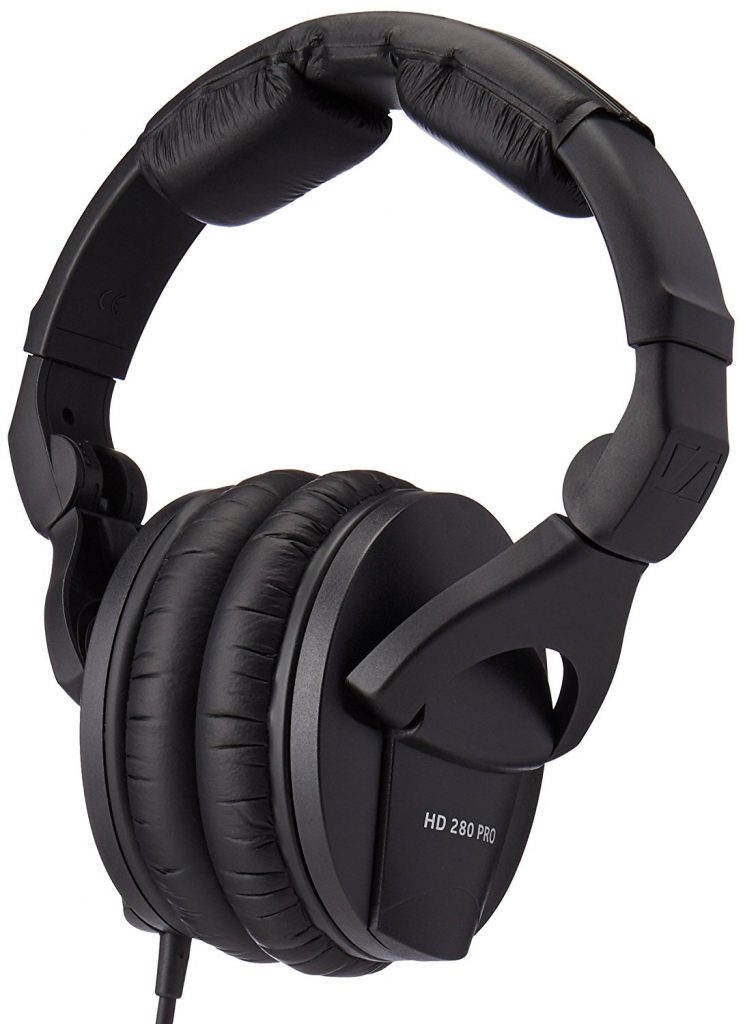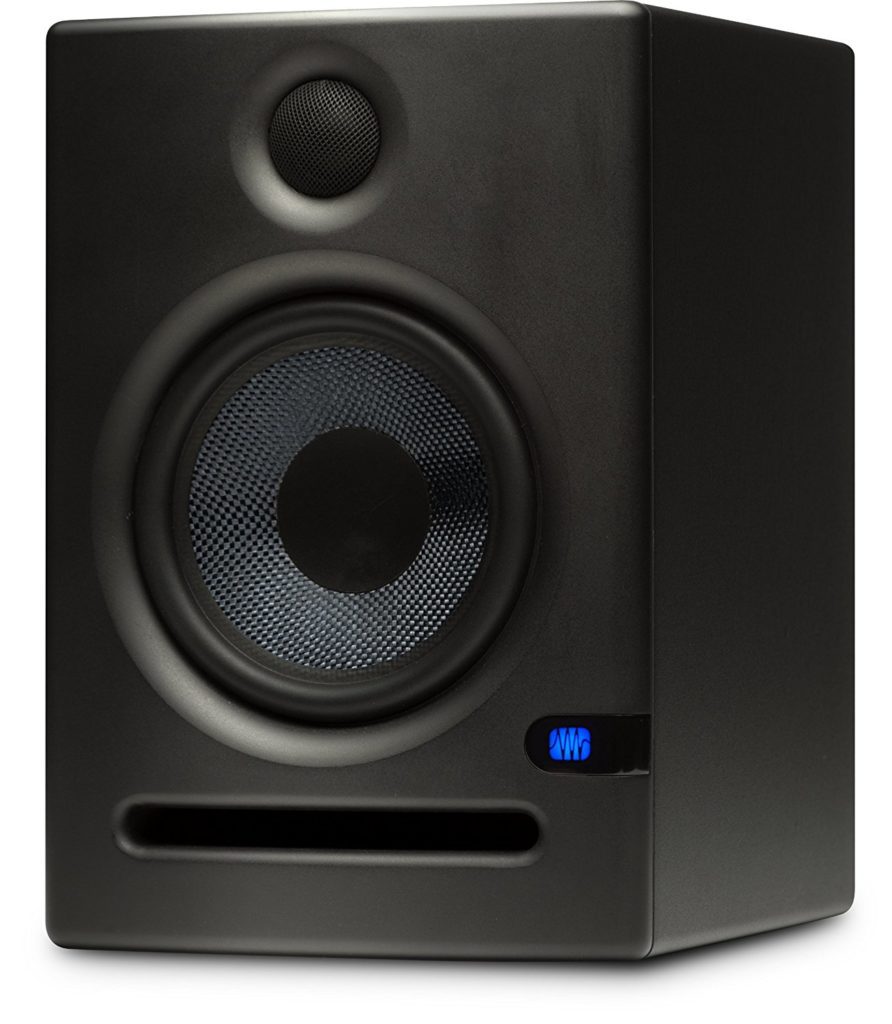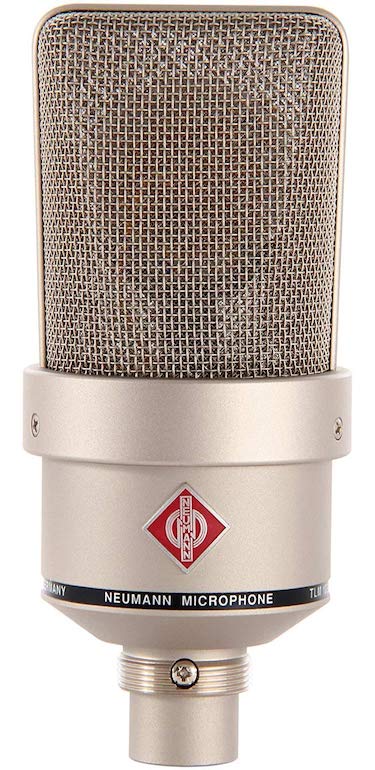Universal Audio Arrow 2×4 Audio Interface
A Small Unit That Has a Lot to Offer
Universal Audio has been working hard over the years to ensure a steady flow of excellent products. Most certainly, this device completes that line of notable devices. The Arrow now costs $499, thus becoming the most affordable Universal Audio interface ever made.
Setting this price could have been the company’s strategic move to penetrate the under $500 market. The Arrow is a very space-conscious desktop device that is designed to be as portable as a wallet. This compact body offers two channels of analog-to-digital conversion via two mic/line inputs and an instrument input, along with two monitor outputs and a headphone output.
Speaking of design, I find this particular product very visually appealing. It’s encased in a pleasantly-textured chassis made of aluminum. The interface of the interface (pun intended) looks very clean and intuitive. The color scheme applied to the screen is not irritating or toxic, something that more recent Pioneer and AKAI products have been experimenting with. And to be honest, it doesn’t suit them at all.
There has apparently been a functional downsize of some sort, considering the nearly $200 drop from the $699 Apollo Twin Solo. Fortunately, the company didn’t downgrade the audio quality that their products are famous for. The Arrow excels in its digital-to-analog conversion as compared to other interfaces in its price range. Derived from UA’s popular Apollo interfaces, the Arrow’s converters do not lack in sonic quality at the Arrow’s affordable price range.
Thunderbolt 3 – The Path to No Latency
The connection is handled via Thunderbolt 3, which is an essential logistic improvement for Mac users. Furthermore, it is a bus-powered unit, meaning that it does not need an external power source, which is an additional point for the portability of this device.
Given the device’s software-hardware integration and the fact that it’s powered via Thunderbolt, you’ll be able to record at nearly no latency. Navin Shenoy, the Vice President of Mobility Client Platform at Intel has called Thunderbolt 3 a “computer port nirvana.” It is designed to deliver information at a much higher speed than its predecessors and USB for that matter. We’ll surely be seeing more devices compatible or even directed towards this technology on the music production market in the years to come.
Plugins That Emulate the Classics
Regarding the sound capabilities, the Arrow acts as a DSP controller. This means that you can apply changes to your input signal via Universal Audio’s top tier plugins with virtually no latency. There are over a dozen UAD-2 plugins that come with the device. In the plugin bundle, you’ll find emulations of classic hardware devices, such as the Plexi Classic Guitar Amp, initially designed by Marshall. This had originally been the amp so often used by the bigger names in Rock and Roll history, ranging from AC/DC to Hendrix himself. Universal Audio has done very well to craft an accurate reproduction of the original Plexi sound profile.
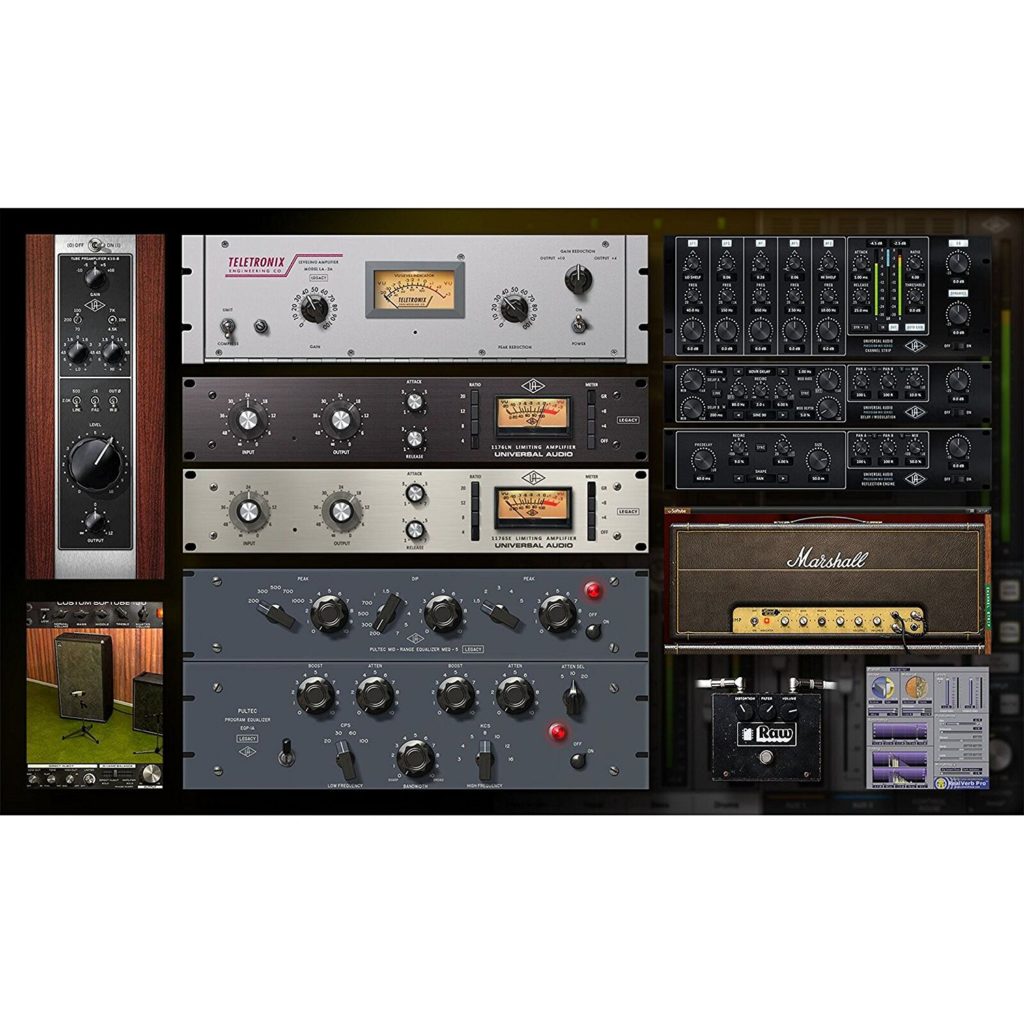 Another sought-after preamp that comes with the package is the UA 610-B. It is a digital reproduction of the colorful tube preamp made initially by Bill Putnam Sr. in the sixties. My personal favorite is the Teletronix LA-2A leveling amplifier. It has a very warm and vintage sound character, serving as an excellent compressor on a large variety of instruments and providing a particularly smooth tone of compression on vocals.
Another sought-after preamp that comes with the package is the UA 610-B. It is a digital reproduction of the colorful tube preamp made initially by Bill Putnam Sr. in the sixties. My personal favorite is the Teletronix LA-2A leveling amplifier. It has a very warm and vintage sound character, serving as an excellent compressor on a large variety of instruments and providing a particularly smooth tone of compression on vocals.
A hidden gem of the pack is the Realverb Pro. This is a versatile and very organic reverb, which is a purely Universal Audio product. The Realverb gives you a lot of freedom when tweaking the size and parameters of the room of your reverb. Since the effect is built on UA algorithms, they’ve had some “room” to experiment with the settings that you have access to. The initial set of 14 plugins that come with the Arrow can be extended, by purchasing additional plugin bundles. Yet, rest assured that you’ll need a few months to fully explore the entire potential of what this set has got to offer.
The Drawbacks?
Now, in attempt to have an objective viewpoint, we need to discuss some of the flaws that come with this device. First off, there have been numerous complaints about the drivers not being compatible with some computers. There are multiple reasons why this can occur, but the most common option would be the fact that your computer does not meet the necessary system requirements. This eventually results in substantial glitches within the recording process, which is always a bummer.
Another issue is related to the dimensions of the device itself. This is for the people that tend to use bulky cable leads. At times, inserting two large leads one next to another becomes a bit challenging. The other consistent and, unfortunately, recurring issue is the Thunderbolt problem. The root of the evil is unknown, but people often report the fact that they have latency issues. Thunderbolt 3 was released a few years ago, so bugs due to the novelty of the technology doesn’t seem to hit the spot.
Another minor inconvenience is the fact that there is a limited amount of plugins that the unit can handle at the same time. When it comes to recording, this isn’t much of a problem if you are a bedroom producer and you don’t deal with multiple instruments on a regular basis. It also doesn’t mean that recording bands is problematic. It rather suggests that heavy plugin-use should be reserved for the slightly bigger and more powerful UA units.
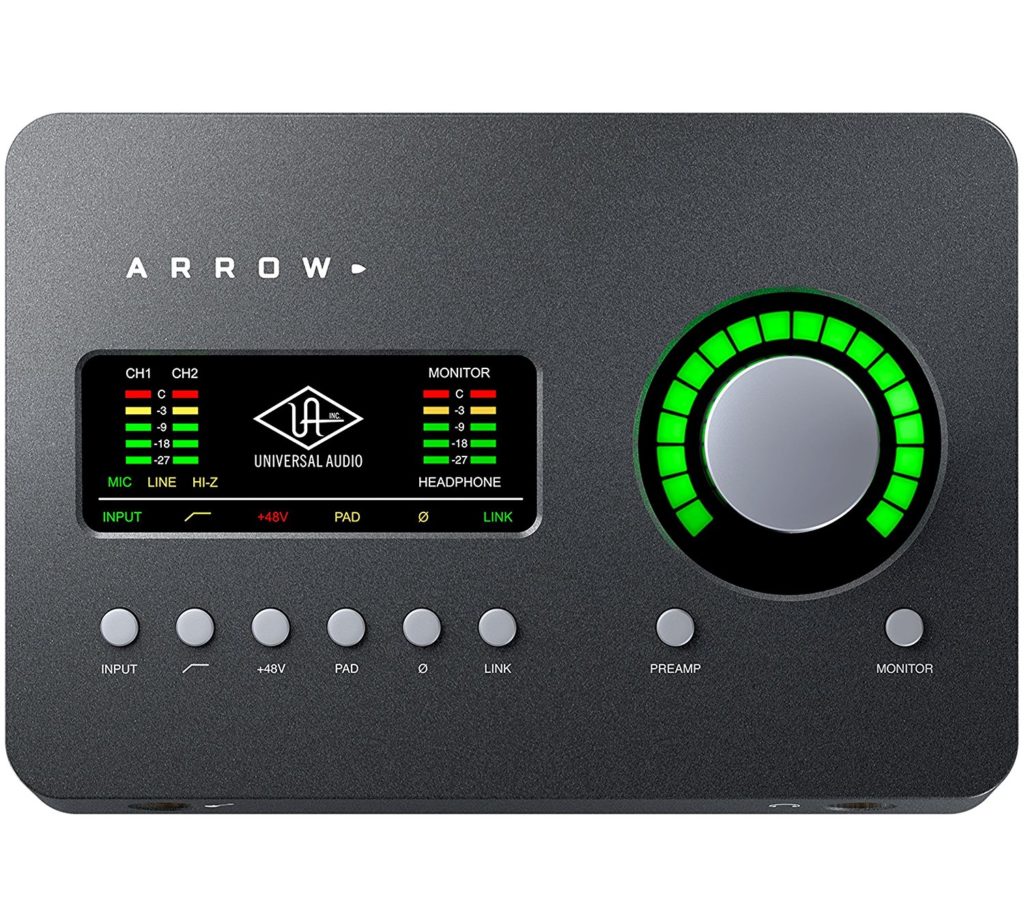
To Round Things Up..
Overall, this is a great option to invest a little more than you would typically do for a small audio interface. Universal Audio’s reputation for high-quality sound remains with this device and at a very affordable price. The last few devices that Universal Audio has put out have exploded and taken over a significant share of the market and for good reason. Universal Audio continues to focus on quality and the Arrow 2×4 is definitely worth checking out. It is a great option for producers in need of a simple and portable interface that doesn’t lack in sound quality.

